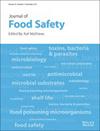Novel Swimming Mechanism for a Robotic Fish
Journal of Rapid Methods and Automation in Microbiology
Pub Date : 2019-01-01
DOI:10.4018/978-1-4666-4225-6.CH004
引用次数: 4
Abstract
Efficient cruising, maneuverability, and noiseless performance are the key factors that differentiate fish robots from other types of underwater robots. Accordingly, various types of fish-like robots have been developed such as RoboTuna and Boxybot. However, the existing fish robots are only capable of a specific swimming mode like cruising inspired by tuna or maneuvering inspired by labriforms. However, for accomplishing marine tasks, an underwater robot needs to be able to have different swimming modes. To address this problem, the Mechatronics Group at University of Canterbury is developing a fish robot with novel mechanical design. The novelty of the robot roots in its actuation system, which causes its efficient cruising and its high capabilities for unsteady motion like fast start and fast turning. In this chapter, the existing fish robots are introduced with respect to their mechanical design. Then the proposed design of the fish robot at University of Canterbury is described and compared with the existing fish robots.机器鱼的新型游泳机构
高效的巡航、机动性和无噪音性能是鱼类机器人区别于其他类型水下机器人的关键因素。因此,开发出了“RoboTuna”、“Boxybot”等各种鱼型机器人。然而,现有的鱼类机器人只能有一种特定的游泳模式,比如受金枪鱼启发的巡航或受唇形启发的机动。然而,为了完成海洋任务,水下机器人需要能够具有不同的游泳模式。为了解决这个问题,坎特伯雷大学的机电一体化小组正在开发一种具有新颖机械设计的鱼类机器人。该机器人的新颖之处在于其驱动系统,使其具有高效的巡航能力和快速启动、快速转弯等非定常运动能力。在本章中,介绍了现有的鱼类机器人的机械设计。然后对坎特伯雷大学提出的鱼类机器人设计进行了描述,并与现有的鱼类机器人进行了比较。
本文章由计算机程序翻译,如有差异,请以英文原文为准。
求助全文
约1分钟内获得全文
求助全文

 求助内容:
求助内容: 应助结果提醒方式:
应助结果提醒方式:


